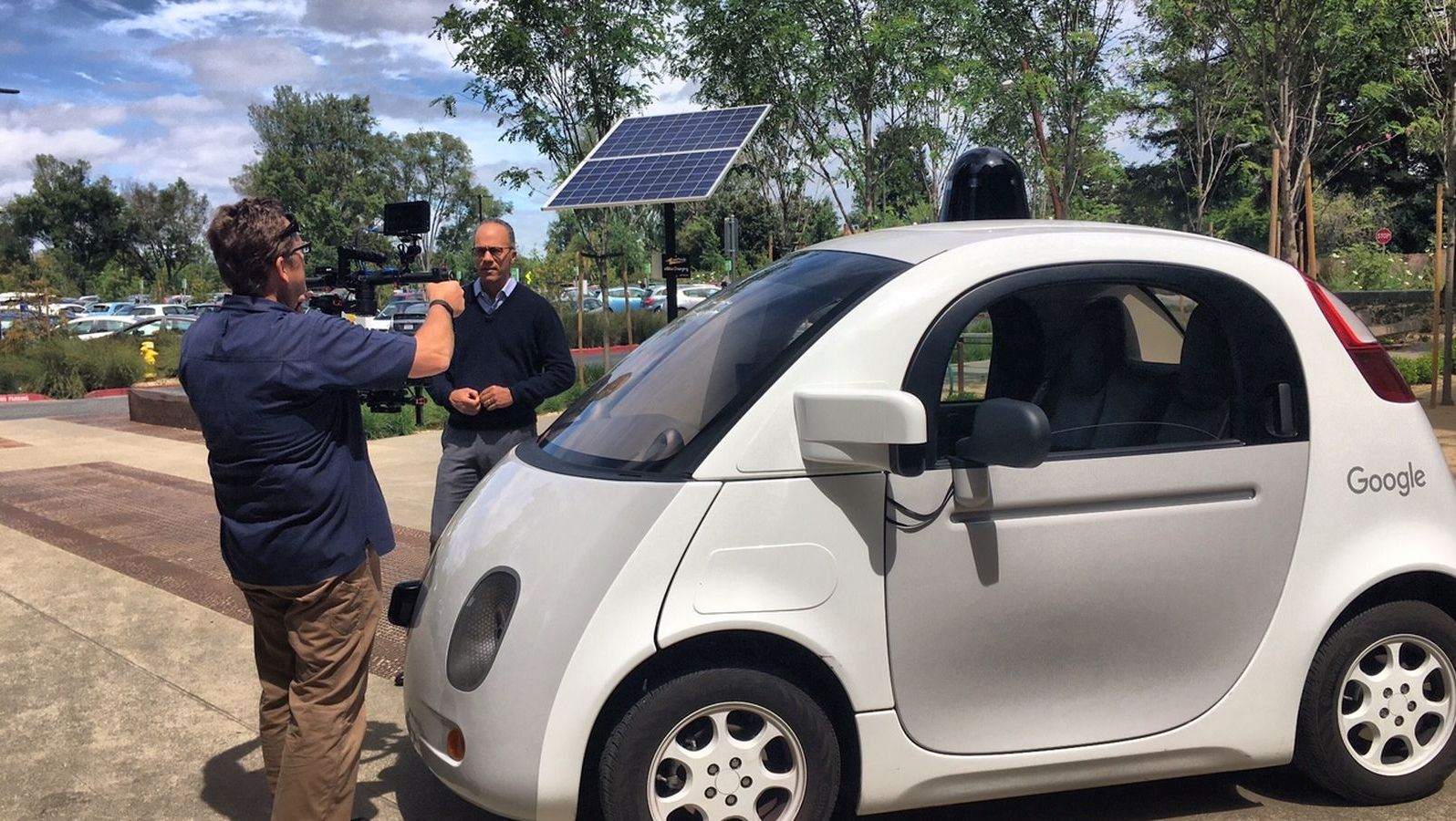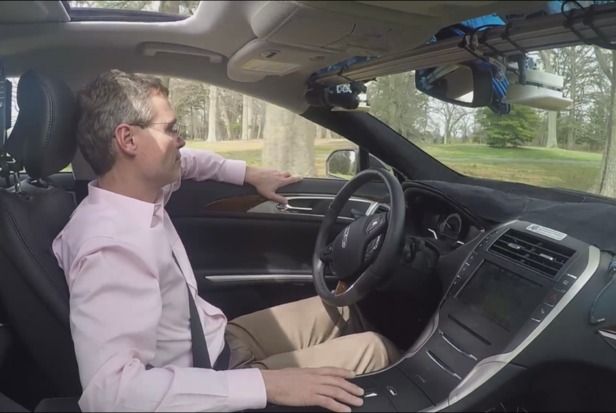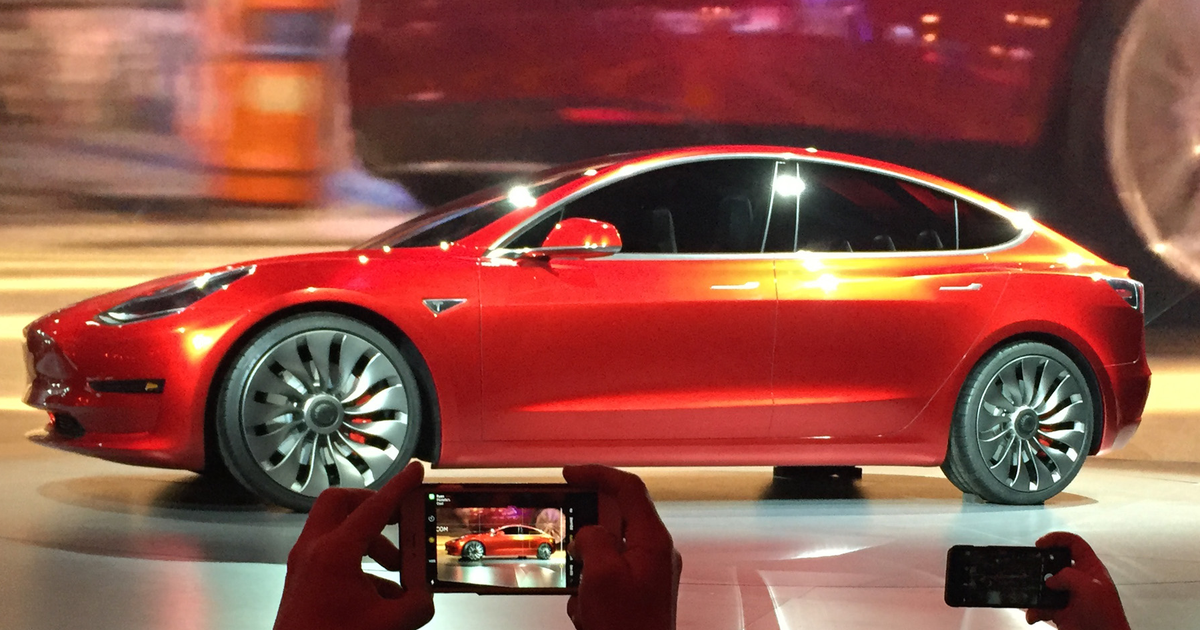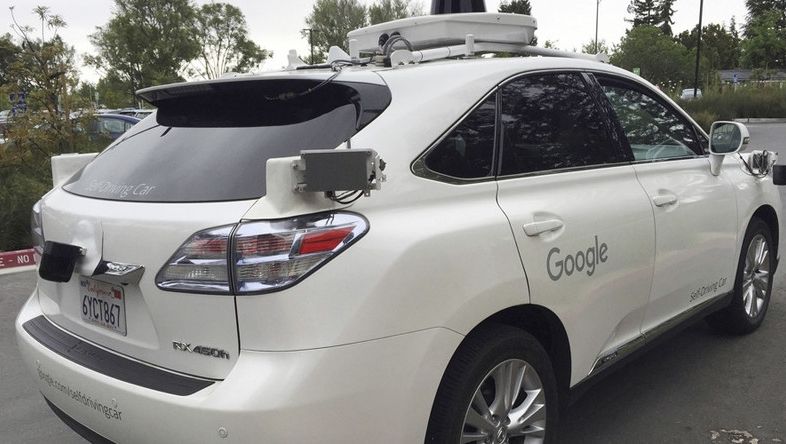But don’t expect the V-280 or SB-1 to hit battlefields until after 2030 — unless their builders find other customers first.



According to Astro Teller, the Google self-driving car is “close to graduating from X.” Parsing out the meaning of that string of words is a little complicated, but basically it means that Alphabet isn’t thinking of self-driving cars so much as a crazy “moonshot,” but as a thing that’s just about ready to be a standalone business that could actually generate revenue.
If you’re not a close follower of Google, though, more explanation might still be in order. It’s coming, in the form of a segment on tonight’s NBC Nightly News with Lester Holt. They’ll be airing an inside look at X division inside Alphabet. That’s the group you know as Google X, but after last year’s corporate reorg, we’re all still getting used to the new naming conventions.
Holt interviewed Astro Teller and Obi Felten, who have the cheeky titles “Chief of Moonshots” and “Director of X Foundry,” respectively. It’ll likely be an overview of the projects that X is currently running — including self-driving cars, Project Loon, Project Wing, and Makani. Teller will also be candid about X’s failures. Failure being a favorite topic of his, actually — Holt tells us that inside X, “if you have an idea that crashes and burns, they give you a sticker.”

I do love Nvidia!
During the past nine months, an Nvidia engineering team built a self-driving car with one camera, one Drive-PX embedded computer and only 72 hours of training data. Nvidia published an academic preprint of the results of the DAVE2 project entitled End to End Learning for Self-Driving Cars on arXiv.org hosted by the Cornell Research Library.
The Nvidia project called DAVE2 is named after a 10-year-old Defense Advanced Research Projects Agency (DARPA) project known as DARPA Autonomous Vehicle (DAVE). Although neural networks and autonomous vehicles seem like a just-invented-now technology, researchers such as Google’s Geoffrey Hinton, Facebook’s Yann Lecune and the University of Montreal’s Yoshua Bengio have collaboratively researched this branch of artificial intelligence for more than two decades. And the DARPA DAVE project application of neural network-based autonomous vehicles was preceded by the ALVINN project developed at Carnegie Mellon in 1989. What has changed is GPUs have made building on their research economically feasible.
Neural networks and image recognition applications such as self-driving cars have exploded recently for two reasons. First, Graphical Processing Units (GPU) used to render graphics in mobile phones became powerful and inexpensive. GPUs densely packed onto board-level supercomputers are very good at solving massively parallel neural network problems and are inexpensive enough for every AI researcher and software developer to buy. Second, large, labeled image datasets have become available to train massively parallel neural networks implemented on GPUs to see and perceive the world of objects captured by cameras.

LeEco is known as the “Netflix of China” due to its very popular video streaming service, but the conglomerate also has interests in a much wider range of sectors including smartphones, TVs and electric vehicles.
Ding Lei, LeEco’s auto chief and a former top official at General Motors’ China venture with SAIC Motor, says part of LeEco’s advantage in tomorrow’s auto industry is that it carries no baggage from today’s.
This, the man said, is the future of cars, and the Chinese consumer electronics company LeEco is going to make that future a reality.


Originally published on EV Obsession.
While it’s now widely realized that Google has been putting substantial amounts of its money into the development of autonomous driving technology over the last few years, it’s probably far less widely known that the Chinese equivalent of Google — Baidu, the top search engine company in China — has begun to do so as well.
Late last week, the company announced that it had formed a new self-driving vehicle team to be based in Silicon Valley — right in the same general “neighborhood” as Google, interestingly. The new team will be focused on the research, development, and real-world testing of autonomous technologies, according to a new press release.

My new Vice Motherboard article on environmentalism and why going green isn’t enough. Only radical technology can restore the world to a pristine condition—and that requires politicians not afraid of the future:
I’m worried that conservatives like Cruz will try to stop new technologies that will change our battle in combating a degrading Earth
But there are people who can save the endangered species on the planet. And they will soon dramatically change the nature of animal protection. Those people may have little to do with wildlife, but their genetics work holds the answer to stable animal population levels in the wild. In as little as five years, we may begin stocking endangered wildlife in places where poachers have hunted animals to extinction. We’ll do this like we stock trout streams in America. Why spend resources in a losing battle to save endangered wildlife from being poached when you can spend the same amount to boost animal population levels ten-fold? Maye even 100-fold. This type of thinking is especially important in our oceans, which we’ve bloody well fished to near death.
As a US Presidential candidate who believes that all problems can be solved by science, I believe the best way to fix all of our environmental dilemmas is via technological innovation—not attempting to reverse our carbon footprint, recycle more, or go green.
As noted earlier, the obvious reason going green doesn’t work—even though I still think it’s a good disciplinary policy for humans—is the sheer impossibility of getting the developed world to stop… well, developing. You simply cannot tell an upcoming Chinese family not to drive cars. And you can’t tell a burgeoning Indian city to only use renewable resources when it’s cheaper to use fossil fuels. You also can’t tell indigenous Brazilian parents to stop poaching when their children are hungry. These people will not listen. They want what they want, and are willing to partially destroy the planet to get it—especially when they know the developed world already possesses it.

Tomorrow’s cars will be all-electric, self-driving, connected to high-speed communications networks … and free.
And probably Chinese.
That, at least, is the vision of Jia Yueting, a billionaire entrepreneur and one of a new breed of Chinese who see their technology expertise re-engineering the automobile industry, and usurping Tesla Motors, a U.S. pioneer in premium electric vehicle (EV) making.
“Tesla’s a great company and has taken the global car industry to the EV era,” Jia said in an interview at the Beijing headquarters of his Le Holdings Co, or LeEco. “But we’re not just building a car. We consider the car a smart mobile device on four wheels, essentially no different to a cellphone or tablet.

Companies from Detroit and Silicon Valley are teaming up to urge lawmakers to put self-driving cars on the street as fast as they can. Companies believe the technology can save many of the 33,000 who die in car accidents, although thousands of jobs may be lost.
Titled the Self-driving Coalition for Safer Streets, the new lobbying group is composed of Google, Ford, Uber, Volvo, and Lyft. The group’s entire goal is to advocate for self-driving technology at the federal level.
Former administration of the National Highway Traffic Safety Administration (NHTSA), David Strickland, will be leading the group.
